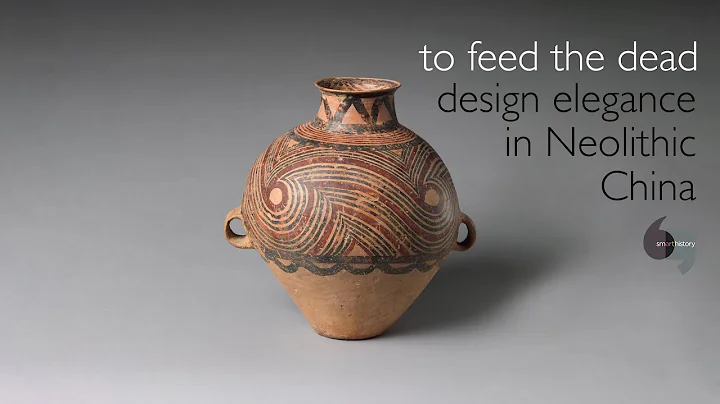
Restoration picture of the head armor of the small-eyed Nanpan fish. Shi Aijuan painted the inner model of the type specimen of

small-eyed southern panfish. Photographed by Gai Zhikun

Picture of early Devonian marine ecological restoration in Qujing, Yunnan. In the picture: Small-eyed southern panfish (upper right); sea scorpion (middle left); Liaojiaoshan multigill fish (middle right); Zhang's true armored fish (lower right). Yang Dinghua drew the ecological restoration map of

small-eyed southern panfish. Painted by Yang Dinghua
■ Classification position: Armored Fishes - South China Ichthyidae - Nanpanichthys
■ Fossil origin: Wangjiayuan Quarry, Liokuo Mountain, Qilin District, Qujing City, Yunnan Province
■ Stratum and age: Xishancun Formation, early mud In the early Lokhokovian period of the Basin Age (about 419 million years ago), A. microeye was discovered in 1965 by a team from the Institute of Vertebrate Paleontology and Paleoanthropology, Chinese Academy of Sciences, in Liokuo Mountain, Qilin District, Qujing City, Yunnan Province. Fossils collected at the homestead quarry. The specimen is a cephalon with an incomplete rear part and its impression. The cephalon is roughly pentagonal in shape and about 6 cm in length (excluding the rostrum). The rostral process is short and pointed, about one-fifth of the length of the cephalon. ; The orbital foramen is small and round, close to the middle of the cephalon; the horn is very short and triangular in shape; the mid-dorsal foramen is vertically round; the lateral line system is well preserved, and the posterior supraorbital canal, dorsal communicating canal, lateral transverse canal and dorsal dorsal canal can be seen; gills There are more than 8 pairs of holes, distributed in the front 2/3 of the head carapace, and the postbranchial area is longer.
As an early-appearing fish in South China, the genus Australopithecus provides important information for exploring the origin of fishes in South China. The genus Australopithecus is also of great significance to the determination and comparison of fish-bearing layers. For a long time, there has been great controversy over the systematic taxonomic position of the genus Australopithecus. Its namer, Mr. Liu Yuhai, established the order Nanpanfish and its only family Nanpanfish in 1975. French paleontologist Jean Vieil (1975) tried to place the genus Australopithecus under the order Multibrachial Fishes , but he still had great doubts. Later, with the continuous progress of field exploration work, more armored fish specimens were discovered and included in the discussion. The phylogenetic analysis of the armored fish subclass became more and more complete, and the systematic position of Nanpanyu had more precise analysis results. . The phylogenetic analysis results of Zhu Min and Gai Zhikun in 2006 showed that the genus Nanpanichthys, with its long and narrow snout and laterally extending horns, may be a new member of the South China fish order Huanpanidae, and therefore classified the genus Nanpanichthys into South China. Fish order South Chinanidae. Later, Liu Yuhai, Gai Zhikun, and Zhu Min published the article "New Discovery of Lower Devonian Armored Fishes (Jawless Classes) in Qujing, Yunnan" in 2018, again discussing the systematic taxonomic position of A. microeye, considering Due to the difficulty in comparing the unique morphology of A. small-eyed fish with other armored fishes and its relatively early appearance in the South China fish order, Liu Yuhai et al. finally assigned A. occidentalis to a single genus, the family A. family, tentatively representing an early branch of the South Chinese fish order.
The most unique thing about the small-eyed southern panfish is that each side has two laterally extending horns. The ends of these short wing horns are rounded and blunt, and they look like four small "wings" spread out from both sides of the skull. There are huge sea scorpions in the living environment of the small-eyed amphibian. Sea scorpions often lurk in shallow waters, preying on armored fish, trilobites and other animals in the sand, sometimes even with their own species. Hydrodynamic analysis shows that the four laterally extending wing angles of the small-eyed Panfish can flexibly control the water flow and have high maneuverability and flexibility, allowing it to escape when encountering sea scorpion prey. In contrast, euphausiids and multi-branched fishes move slowly and are easily preyed upon by sea scorpions.
In terms of body structure, the four lateral extensions of the wing angles of the small-eyed Anaplasma are similar to the Microraptor, which also has four wings. Microraptor is a small dromaeosaurid dinosaur discovered in the Jiufotang Formation of Liaoning Province, China by researcher Xu Xing, a famous paleontologist in my country. It lived in the early Cretaceous period, that is, about 130 million to 1. 25.5 billion years ago. The unique four-wing structure of Microraptor played a key role in exploring the origin of flight in modern birds. That is, in the arboreal origin hypothesis of the origin of bird flight, it may have gone through an intermediate stage of four-wing flight.The flight of birds gradually evolved from a four-winged mode to a front-winged mode at some point, which means that all modern birds may have evolved from a four-winged ancestor, or from an ancestor with unique foot feathers evolved.
Background story
Decrypting the "surprised expression" of armored fish
When observing the restoration pictures of armored fish, we are often attracted by the "expressions" of these fish that lived more than 400 million years ago. In the restored picture, they have round eyes, some on their backs, some on their sides; and they also have wide "mouths". Some of these "mouths" are round or oval-shaped, as if they have encountered something scary, and some even bend their "mouth corners" to smile. It is the combination of these eyes and "mouth" that makes the "surprised" armored fish look so naive. So the question is, why do armored fish have these cute and unique expressions? Does the restored picture really show the expression of the armored fish?
Actually, the answer is no. The round eyes we think of at first glance are indeed the eyes of armored fish. But the "mouth" we think of at first glance is not the real mouth of the armored fish. The front end of the armor's fish headplate will be pierced by a large mid-back hole. And the common characteristic of this armored fish - the huge nostrils, is mistaken for its "mouth" by us. The name of the dorsal foramen in
comes from its position on the head of the armored fish. It can also be called the nasohypophyseal foramen, which is commonly known as the nostril. According to the three-dimensional virtual reproduction image of the brain of Auronas, there is a large oronasal cavity below the middorsal foramen. The nasal sacs are located on both sides of the oronasal cavity. The pituitary tube opens on the back wall of the oronasal cavity. The oronasal cavity is connected to the oral cavity downwards. Connects with the pharyngeal cavity posteriorly. The nostril is connected to the oral cavity and pharyngeal cavity, which indicates that it is a water inlet with respiratory function. The mesodorsal foramen is roughly divided into: heart-shaped represented by South China fish and large-window fish , crescent-shaped represented by Trichoderma fish, pea-shaped or oval shaped represented by multi-branched fish and Oriental fish, etc. It can be seen that the shape of the mesodorsal foramen varies greatly, which is a good basis for classification and is of great significance for the identification of species and phylogenetic analysis of armored fishes.










![Old Town of Lijiang, Yunnan, China [Amazing Places 4K] - DayDayNews](https://i.ytimg.com/vi/vlsM-r3Vp4Q/hq720.jpg?sqp=-oaymwEcCNAFEJQDSFXyq4qpAw4IARUAAIhCGAFwAcABBg==&rs=AOn4CLDOIFFeRuhcs_bV_LOm5yDYPcGWwg)










